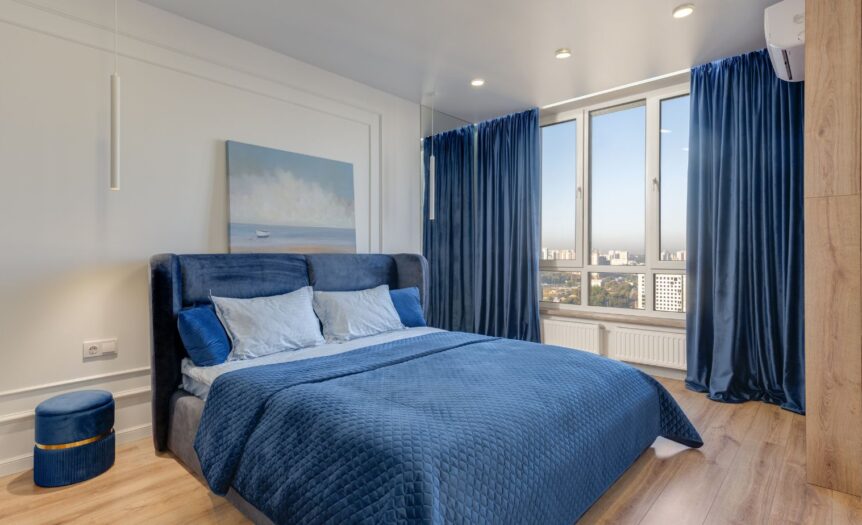When it comes to creating a cozy and energy-efficient home, thermal curtains are a game-changer. These specially designed curtains not only enhance the aesthetics of your living space but also provide practical benefits like temperature regulation and reduced energy bills. In this article, we’ll explore what thermal curtains are, how they work, and why they’re a must-have for modern homes. We’ll also discuss insulated curtains, a closely related option that offers similar advantages.
What Are Thermal Curtains?
Thermal curtains are window coverings made with multiple layers of fabric designed to block heat transfer. Unlike traditional curtains, thermal curtains have a special lining that adds insulation, making them effective at maintaining indoor temperatures. They work by reducing heat loss during winter and preventing heat gain during summer, ensuring your home stays comfortable year-round.
Key Features of Thermal Curtains:
Insulating Layers
Thermal curtains have a thick inner lining, often foam or thermal fabric, that traps air and blocks heat transfer, keeping your home comfortable.
Energy Efficiency
By reducing heat loss in winter and heat gain in summer, thermal curtains help lower heating and cooling costs, making them energy-efficient.
Noise Reduction
Their dense material acts as a sound barrier, reducing external noise and creating a quieter indoor space.
Light Blocking
Many thermal curtains are also blackout curtains, offering privacy and better sleep by effectively blocking out light.
How Do Thermal Curtains Work?
Thermal curtains are engineered to trap air between their layers, creating a barrier against temperature fluctuations. Here’s how they perform in different seasons:
In Winter: Insulated curtains prevent warm air from escaping through windows, keeping your rooms warmer and reducing the need for heating.

In summer, they block the sun’s heat from entering, maintain a cooler indoor environment, and cut down on air conditioning usage.
The result is a more consistent indoor temperature and reduced energy bills.
The Benefits of Using Thermal Curtains
Energy Savings
One of the biggest advantages of thermal curtains is their ability to lower energy costs. By reducing the need for heating and cooling, these curtains help you save money while being eco-friendly.
Improved Comfort
Thermal curtains create a more stable indoor environment. No more chilly drafts in winter or stifling heat in summer – just comfortable living spaces all year long.
Enhanced Privacy and Noise Reduction
The thick, multi-layered construction of thermal curtains blocks light and sound effectively, offering enhanced privacy and a quieter home.
Stylish Options
Available in a wide range of colors, patterns, and materials, thermal curtains can complement any interior design style, from modern to classic.
What Are Insulated Curtains?
Insulated curtains are a similar option to thermal curtains, and the two terms are often used interchangeably. However, there are slight differences worth noting. While thermal curtains focus primarily on temperature regulation, insulated curtains are designed to offer comprehensive insulation benefits, including soundproofing and light-blocking properties.
Key Features of Insulated Curtains:
Multi-Layer Design: These curtains typically have a foam core or thermal backing for superior insulation.
Versatility: Insulated curtains are excellent for both residential and commercial spaces.
Cost-Effective: They’re an affordable way to enhance energy efficiency without replacing windows.
Thermal Curtains vs. Insulated Curtains: Which Should You Choose?
Both thermal and insulated curtains provide excellent insulation and energy-saving benefits. The choice often comes down to your specific needs:
Choose Thermal Curtains If: You prioritize temperature control and want an aesthetically pleasing option.
Choose Insulated Curtains If: You need a multi-functional solution for noise reduction, light blocking, and insulation.
How to Choose the Right Thermal Curtains
When shopping for thermal curtains, consider the following factors:
Fabric and Layers
Look for curtains with a high-quality thermal lining and multiple layers for maximum insulation.
Size and Fit
Ensure the curtains cover your windows completely and extend beyond the frame for the best results.
Style and Design
Select a design that complements your interior decor while fulfilling your functional needs.
Ease of Maintenance
Opt for curtains that are easy to clean and maintain, such as machine-washable options.
Installing Thermal Curtains
Measure Your Windows
Start by measuring the dimensions of your windows to ensure the curtains fit perfectly.

Measure both the width and height of the window frame, and allow extra fabric to ensure the curtains extend beyond the frame for better insulation.
Choose Suitable Curtain Rods
Thermal curtains are heavier than regular curtains due to their insulating layers. Select sturdy curtain rods that can support their weight without sagging. This ensures the curtains hang properly and remain effective.
Hang the Curtains Correctly
Install the curtain rods and hang the curtains so they extend a few inches beyond the window frame on all sides. This snug fit helps seal any gaps, minimizing air leakage and improving their insulating properties. Ensure the curtains reach the floor or windowsill for maximum coverage.
Conclusion
Thermal curtains are an excellent investment for any home, offering a blend of style, comfort, and practicality. By reducing energy consumption and improving indoor comfort, they contribute to a more sustainable and cost-effective lifestyle. For those seeking similar benefits with added versatility, insulated curtains are a great alternative. Whether you’re looking to save on energy bills or enhance your home’s coziness, thermal and insulated curtains are the perfect solutions to consider.



